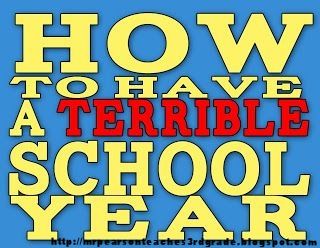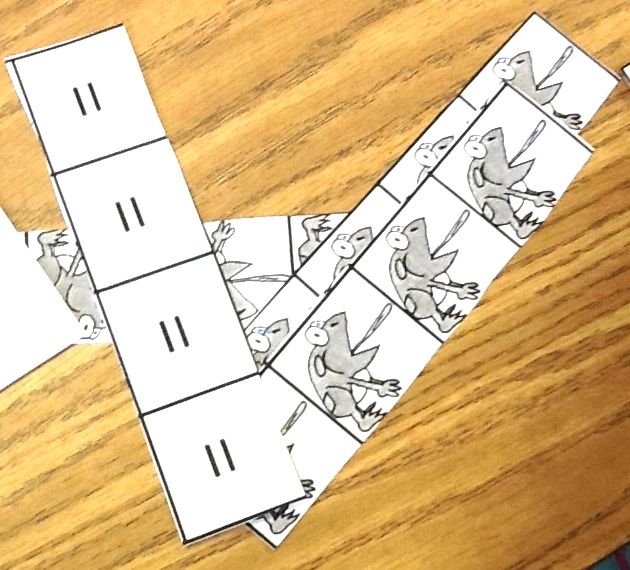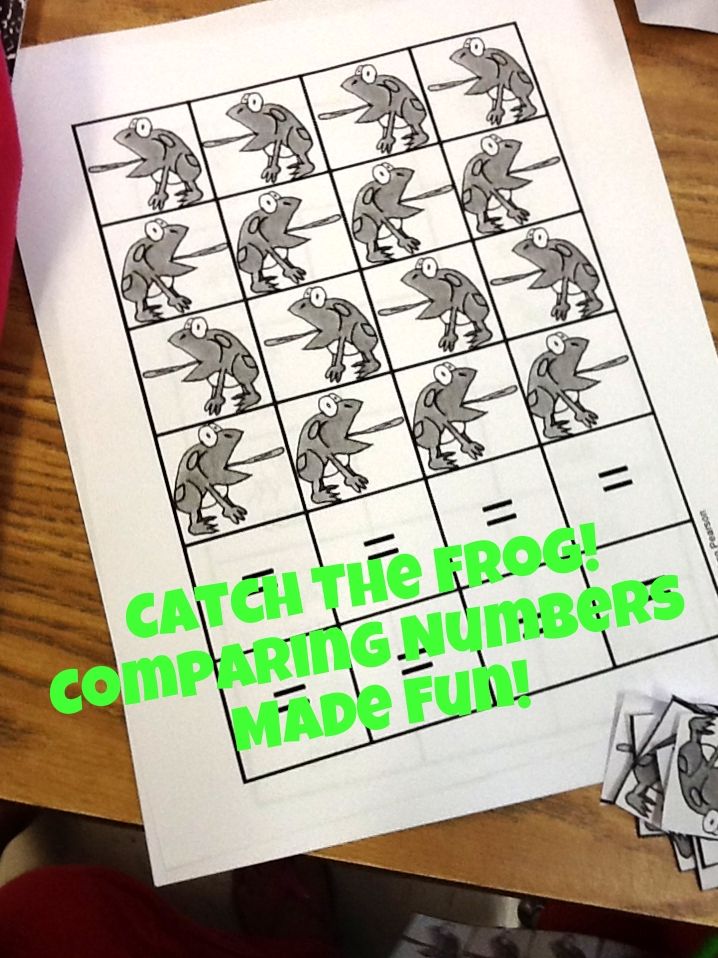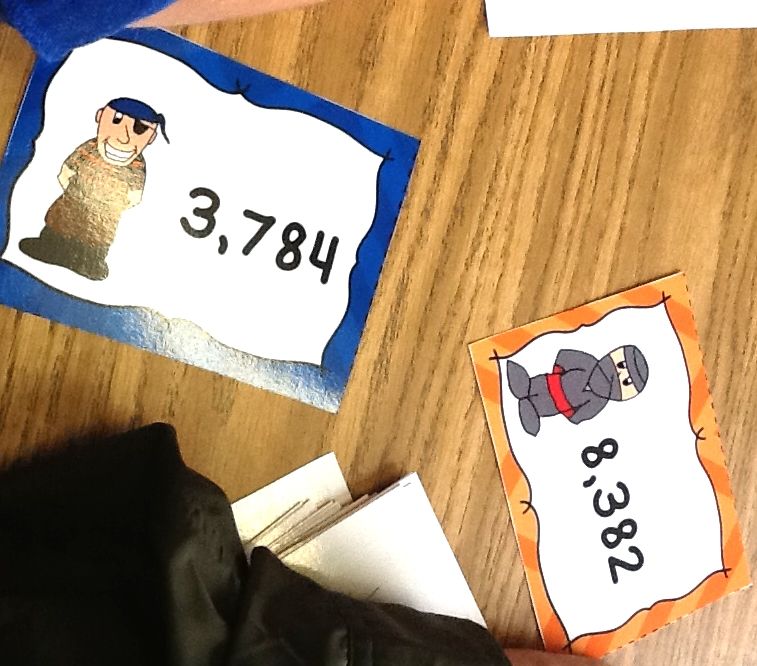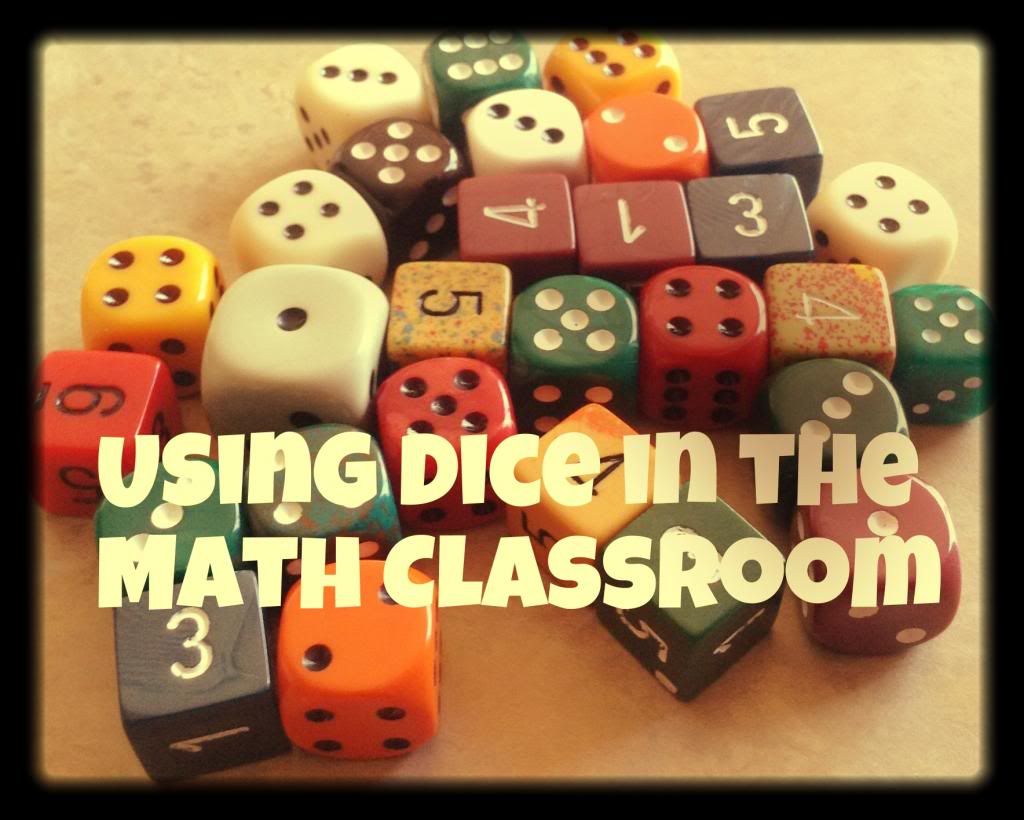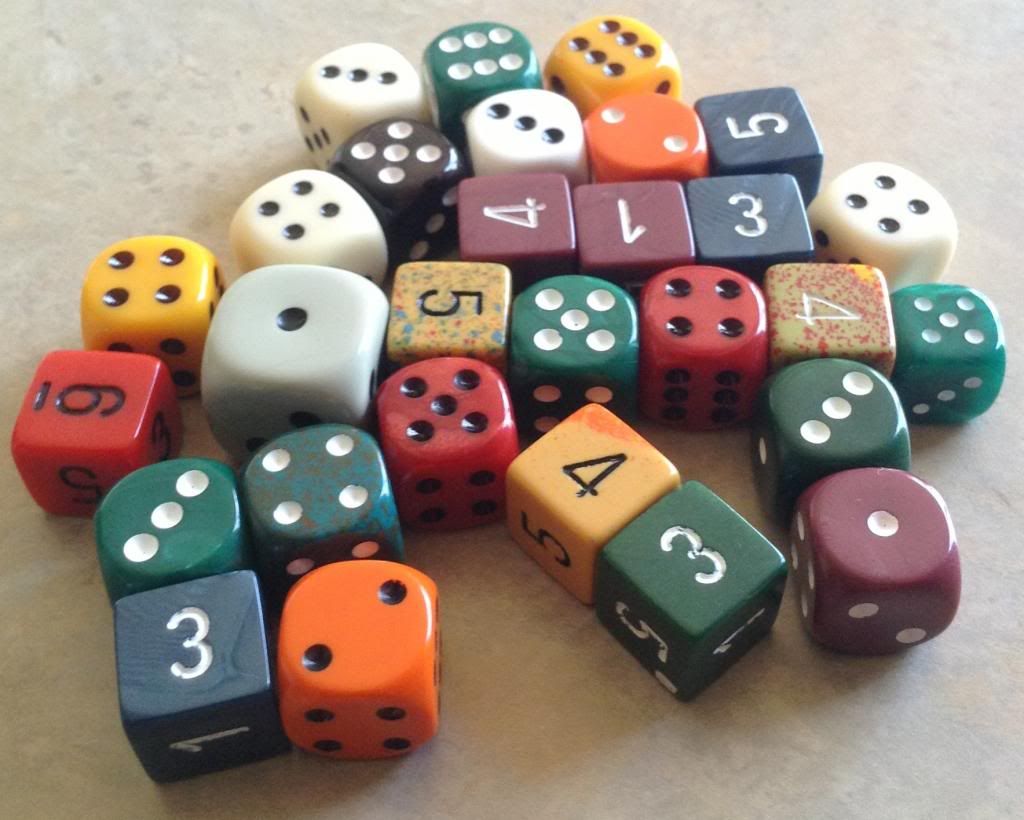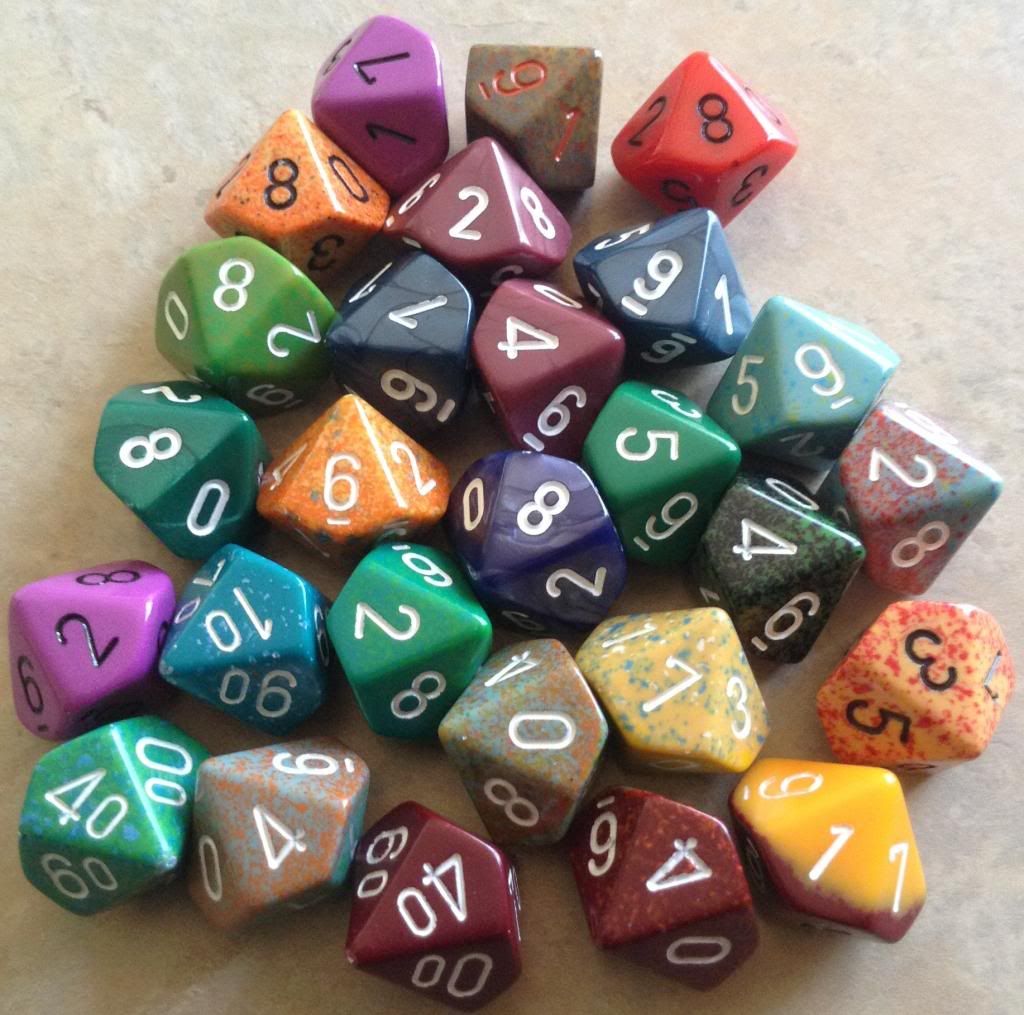Wednesday, October 9, 2013
How To Have a Miserable School Year
Update: The 2013-2014 school year was so much better than previous years. I had a new team and a new co-teacher. I also made certain that I had a better attitude about things and it made a whole world of difference. Here's hoping and praying that next year (with more changes on the horizon) will be just as good.
Last year was a terrible year. I was unhappy and I made sure everyone knew it. There were a lot of things that I wish I could change about last year, but that is in the past. This year, however, I have decided to have a better year. There are, as usual, things that are beyond my control about the school year. Everyone has those. But instead of focusing on the things we can't change, we need to take charge of the things that are ours to take care of. With that in mind, here are three ways to guarantee you will have a miserable school year.
Continue to Focus on Things You Cannot Change. - Every teacher faces struggles in their classroom. Every teacher has challenging students and difficult parents. Some teachers have the privilege of working with special education students or with students who are so new to the country that they don't even know what the bathroom is in English. That doesn't mean you can use those challenges as an excuse for poor performance or a lack of planning. As teachers we have to take the class we are given and do our very best to teach those students the content and how to become the best human beings they can.
Make Excuses Based on Time Constraints. - There is never enough time in the day. We all have to go to meetings, then go to more meetings, and we have to end the day with more meetings. The lessons we planned will ALWAYS take more time than we have to give them. You will be absolutely miserable if you can't get past the fact that time is short and students take a long time to do EVERYTHING. There is nothing I would love more than to get to the end of a unit, knowing that I had a ton of extra time. That's just not the case and making excuses about why I can't everything done because of data meetings, team meetings, and home responsibilities will make sure I have a terrible year.
Refuse to Try Anything New. - Everyone has their favorite assignments and projects. We tend to get a bit possessive of the way we teach and it is hard for us to deviate from the norm. That doesn't mean that we shouldn't try something new. We need to be willing to "roll with the punches" and try something new, not just because it is new, but because it might have a better result than that worksheet you've been doing every October since you made the switch from mimeograph to Xerox. And, yes, I used to teach with a woman who had her boxes. She had a September box, October box, etc. If it wasn't in the box, she didn't teach it. Needless to say, she spent a lot of time complaining any time something new was introduced. Don't be that lady.
There you are. Follow those three steps and I guarantee you will have a terrible, horrible, no good, very bad school year. Promise.
Tuesday, October 8, 2013
Using Scavenger Hunts in Math
 I am a big believer in having my students engaged as much as possible when they are practicing math skills. My team uses a centers-based teaching framework so that we meet with smaller groups of students. To do this, we need incredibly engaging activities for the other students to be working on. This is a strong area for me and something that I love doing.
I am a big believer in having my students engaged as much as possible when they are practicing math skills. My team uses a centers-based teaching framework so that we meet with smaller groups of students. To do this, we need incredibly engaging activities for the other students to be working on. This is a strong area for me and something that I love doing.
One of the centers that my students love the most is the math scavenger hunt. A scavenger hunt is an activity where I scatter review questions around the classroom and the students have to look around and locate the questions. The questions are not hidden in difficult places, but I do try to mix up the numbers of the questions. Question 5 might be hung next to question 22.
Right now, my students are working on completing an addition scavenger hunt. There are 22 questions (covering all of the skills we are teaching in this unit) hung up around the classroom. My students go from question to question, answering as they go. It is fun to see if they will answer the questions as they find them or to watch them hunt around and try to do the questions in order. Each scavenger hunt has an answer sheet for the students to record their answers on (in case I need a formative assessment or something). Before the Addition Scavenger Hunt, we did a Place Value Scavenger Hunt. When I passed out our Centers Grid for the week, they (both classes) were very excited to see the Scavenger Hunt on there.
If you are interested in using a Scavenger Hunt in your classroom, the hunts that I have made are available from Teachers Pay Teachers. I also included a QR code on each question, so students using iPads or iPods can check to see if they got the answer correct. It is a lot of fun and very engaging for the students.
The Addition Scavenger Hunt and the Place Value Scavenger Hunt are available at my TeachersPayTeachers store, along with many other math activities and games. I would love for you to check out the products I have available. I would also love to know what centers you use in your math time. Please leave a comment below to let me know what your students love doing to help them practice their math skills.
Tuesday, September 17, 2013
The Importance of Binder Rings
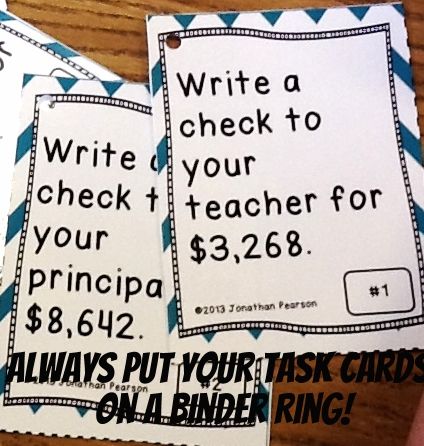 |
| Always put your task cards on a binder ring! |
Everything was going swimmingly with my centers. At least until clean up time came. Maybe it is just a third grade thing, but clean up seems to be a disaster every day. Children who were behaving wonderfully seem to lose their minds when it comes time to put things away. This is especially true for task cards that come out of envelopes.
Now maybe I wasn't specific when I gave the instructions, but I'm pretty sure that I said to make sure that all cards that come out of envelopes go back into the same envelopes. This, of course, was not the case. When I started to clean up from the day, I noticed that one envelope of cards was very anemic while another envelope looked as if it had just enjoyed a seven course meal. Instead of returning the cards to the correct envelope, the students just shoved the cards into whatever envelope they could find. I even found some of my Check Writing cards in envelopes with Pirates vs. Ninjas, another place value center. I had to sort all of the cards (again!) to make sure they were all there.
So I wised up. I probably should have done this to begin with, but I invested in some binder rings. I put all of the cards on rings. It was beautiful. And the best part? No cards got misplaced! I am a genius. Now, I just need to remember to do it again in the future.
Monday, September 16, 2013
Introducing Math Centers
The first centers I introduced were place value oriented. We have been focusing on the skills of writing numbers (in standard, word, and expanded form), comparing numbers, and rounding numbers. With that in mind, I created a number of centers to help reinforce those skills.
The first center I introduced to the students was something I call "Catch The Fly!" This activity allows the students to compare numbers using the symbols for greater than, less than, or equal to, but does it in a way that encourages a bit of fun. Instead of using the regular (boring) symbols, the center gives students special frog symbols to use. Each of the numbers being compared has a fly over it, so the frog is trying to eat the bigger of the two flies. The students were very excited about this one and were meticulously cutting out their frogs. The only thing that I would change about this center is the fact that the frogs they are using are black and white. The actual file has them in color, but that is a lot of color ink to use when making enough sheets for the whole class to use.
Monday, September 9, 2013
Thinking Like a Scientist - Diet Coke and Mentos
During the first week of school, our third grade students talked about what it means to be a scientist. We brainstormed and came up with ideas of what a scientist does. These included saving the environment, building technology, and discovering things. After we made this list, we drew and colored what the students thought a scientist looked like. Nearly every kid drew a scientist with gloves, a lab coat, and goggles.
The lessons culminated with a lesson on how a scientist discovers things. I taught them that a scientist begins by asking a question, sometimes even lots of questions. After coming up with the question, the scientist develops a hypothesis, what he thinks will happen. Next, he conducts his experiment and records his data. Finally, he analyzes the data and comes up with his conclusion and determines if his hypothesis was right or wrong.
The big event for the week was the Diet Coke and Mentos experiment. Many of our families were gracious enough to donate the needed materials. We chose Diet Coke, diet lemon lime soda, and diet root beer. We also used mint-flavored Mentos. Here are some of the results:
Needless to say, the students had a blast participating in the activity, even though I was the one having all the fun. This is a really easy and exciting activity to do and only needs a few materials. There is a website devoted to the science behind this experiment with a lot more videos. The website is called EepyBird.com.
Many of the students were asking me about the special tube I used in the experiment. I used a special tube that attached to the top of the soda bottle and allowed me to load the Mentos into the bottle and pull a string after moving safely away. That tube is called Steve Spangler's Geyser Tube. The Geyser Tube not only kept me dry, it also controlled the flow of the "eruption" from the soda, allowing it to go much higher. The Geyser Tube can be purchased at Amazon.com, but I have also seen them at Cracker Barrel and sometimes at toy stores in the mall.
It was a great first week teaching science and I am looking forward to the exciting things we have planned for teaching matter.
Sunday, September 8, 2013
Using Dice in My Math Classroom
While most people think of just the 6-sided number cube that is used in most games, there are actually a large number of different dice, ranging from 4-sided to 12-sided. In my class, we use 6-sided cubes, 10-sided dice, and 12-sided dice. Here is a list of some of the things I've used dice for in the past.
- Making numbers for rounding
- Place value games
- Addition problems
- Subtraction problems
- Multiplication facts
- Division practice with remainders
The problem that I ran into was the fact that I only have a small number of dice. I think I currently have six of the 10-sided dice and six 12-sided dice, in addition to a number of 6-sided cubes. This limits the number of students who can participate. Unfortunately, the price for the dice were also a bit expensive. At our local teacher supply store, the dice were between $1.50 and $2.00 each. This doesn't sound like a lot, but when you have to buy a lot of them, that price adds up quickly.
The other day on Amazon.com I came across an item called Pound-O-Dice. While I don't know if it exactly 1 pound of dice, I do know that it was exactly what I was looking for! The Pound-O-Dice gave me a huge collection of dice. I received 4-sided, 6-sided, 8-sided, 10-sided, 12-sided, and 20-sided dice. And not just a few. In total, I think I received over 100 dice in the Pound-O-Dice. The price was about $21.00, but I recently receive an Amazon.com gift card for taking an online survey. Even at $21, the Pound-O-Dice was well worth the money.
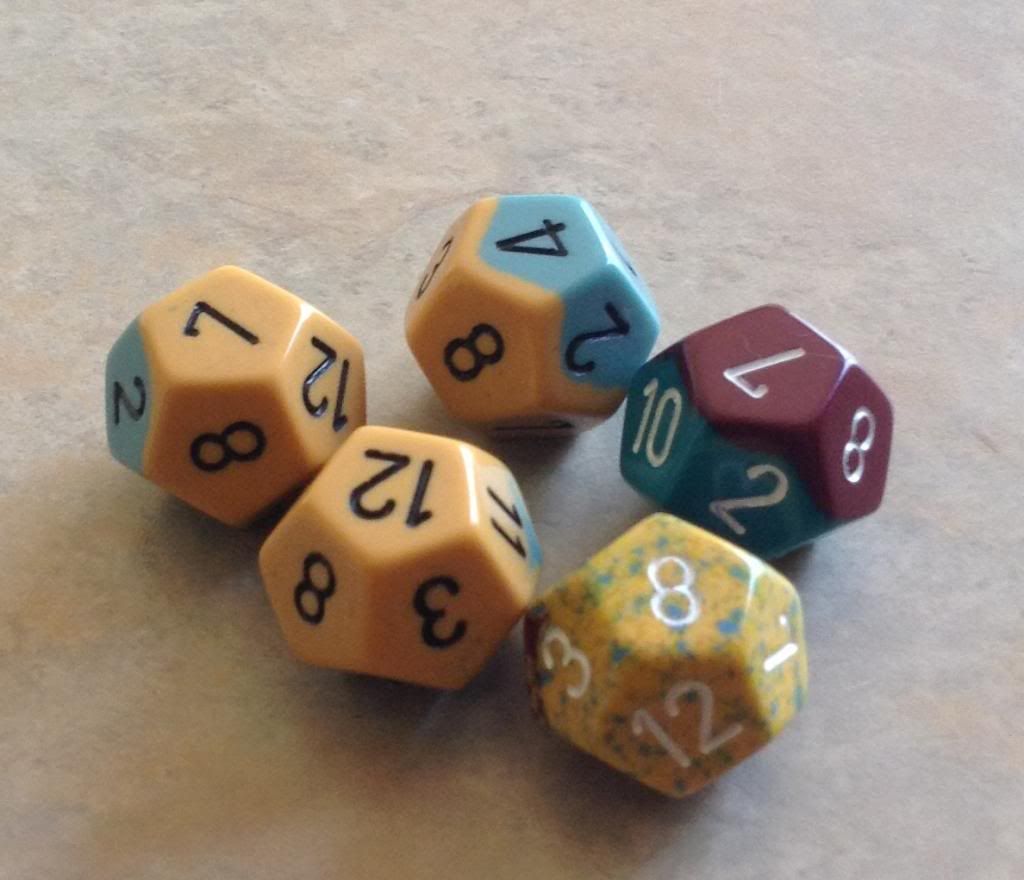 |
| 12-sided dice - Great for multiplication practice. |
Wednesday, September 4, 2013
The First Day of School
To be honest, I'm not even sure if she know how special it was to me. Here's the back story: When she and her family came to visit at Open House, I was teasing her little brother about needing to have a joke every time he came to see me or wanted to come into the classroom. He just laughed and walked away, not really understanding what I was doing. It would appear that my student took me seriously, so she went home to find and download some jokes to share with me and the class today.
I don't normally get all teacher-mushy, but this definitely made me smile. It was a good first day.

